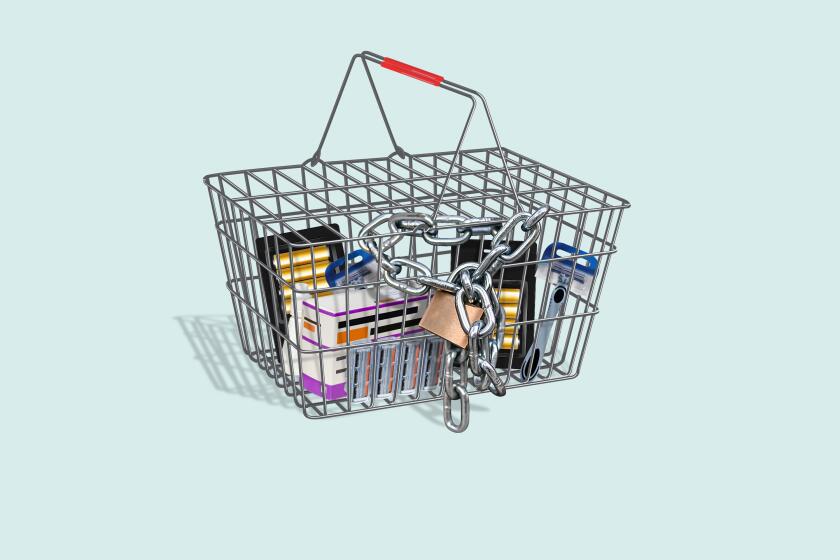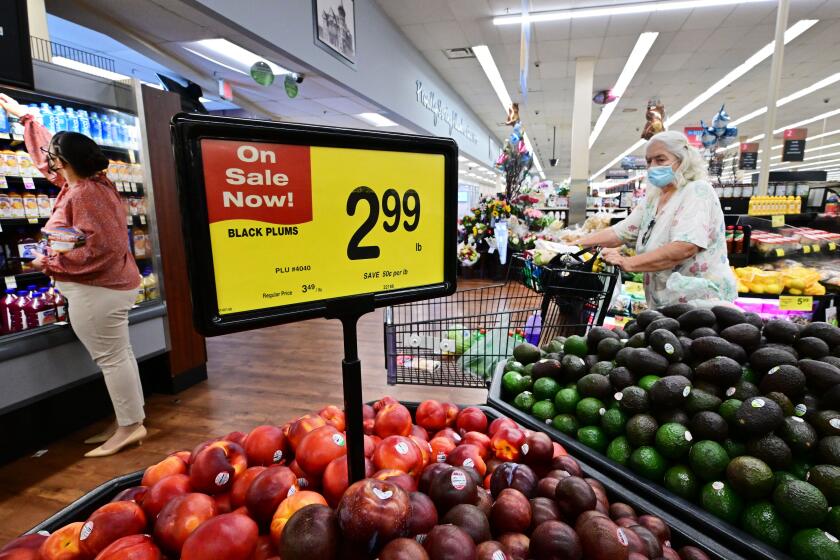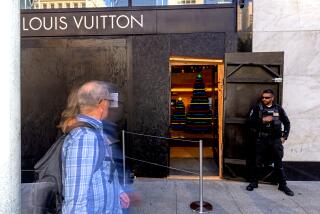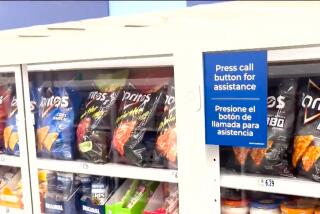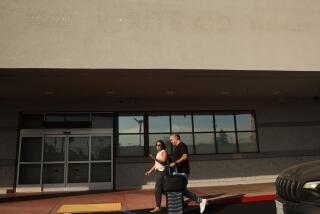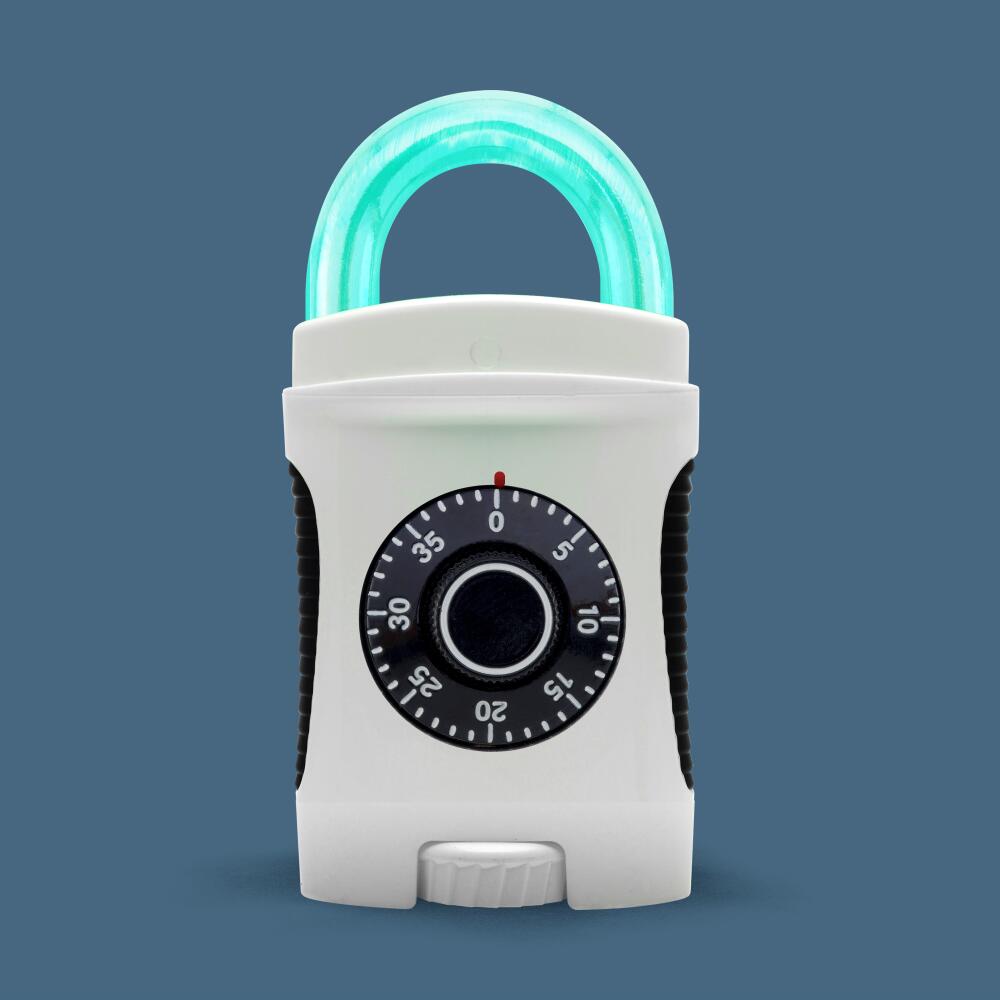
- Share via
Detergent and deodorant, toothpaste, the entire shampoo aisle.
“It’s all locked up,” Corey Potter sighed, describing shelves encased behind security glass at a Target near her Echo Park home. “I hate it.”
Potter recalled once waiting 15 minutes for an employee to unlock a case at another Target location. These days, if she sees several other shoppers waiting for too few frenzied workers, the 30-year-old video editor typically skips items on her list and later does something she doesn’t feel great about: buys more home essentials on Amazon.
“Rather than go to Target and wait,” she said, shrugging, “I’ll just give Daddy Bezos my hard-earned cash.”
Shoplifting is as old as shopping itself. And retailers have long played a game of cat and mouse with thieves, searching for ways to thwart them while still giving paying customers easy access to merchandise.
The true severity and scope of the problem remain an enduring mystery of the free market, as national chains eagerly point to retail theft as a key drag on profits, but are reticent to publicly discuss internal numbers on shrink — the industry term for theft and other types of loss — or specifics of new anti-theft measures. Adding to the murkiness, the issue has become more politicized in recent years as some voters and elected officials in Los Angeles, San Francisco and other city centers clamor for a response to what they see as a worsening problem.
But what is clear to anyone who has shopped at a drug, grocery or home improvement store in L.A. in recent years is that retailers are increasingly resorting to the drastic step of barricading entire swaths of their stores behind lock and key.
Drugstores are locking up more products, frustrating shoppers. The Times surveyed stores and found vastly different approaches to preventing theft.
Using a tactic once reserved for a few pricey, high-demand items — cold medication, electronics, baby formula and razors to name a few — big chains now routinely lock up almost every type of merchandise. A shopper looking to grab a box of condoms or a $1.99 set of crayons, ointment to remove calluses or a container of instant coffee, now often has no choice but to hit a button to summon a store employee with a key and wait.
Executives focused on their companies’ bottom lines are no happier about taking the drastic step to deter shoplifters. Although they’re in the business of selling as much as possible, they’ve been left to make the seemingly backward calculation that thefts require them to make it harder for paying customers to buy things.
“Locking a product,” a spokesperson for CVS said in an email, “is a measure of last resort.”
Retail theft has become a priority for California leaders in recent years.
In September, Gov. Gavin Newsom sent $267 million to cities and counties to increase arrests and prosecutions of organized retail crimes. A few weeks earlier, L.A. Mayor Karen Bass announced a task force focused on such crimes, following a string of robberies at high-end stores such as Gucci and Yves Saint Laurent that garnered a flurry of media attention and helped further cement a new phrase into the zeitgeist: A smash-and-grab.
In February, California Atty. Gen. Rob Bonta filed criminal charges against a woman he called the ringleader of a retail theft group prosecutors say stole nearly $8 million in beauty products to resell on her Amazon storefront. And last week, the coalition behind a tough-on-crime ballot initiative that would roll back the landmark Proposition 47 by stiffening penalties for some retail thefts in California submitted enough signatures that it appears the measure will go before voters in November.
The initiative was bankrolled largely by big chains, including Walmart, Target and Home Depot.
While the companies work publicly to change California law, they are taciturn about discussing their efforts to stop shoplifters, making it hard to quantify how much more merchandise is now locked up and which stores have embraced the strategy.
Representatives for several of the region’s largest retailers — Target, Vons, Rite Aid and CVS — either didn’t respond to requests to discuss internal deliberations on stemming theft or sent brief statements about their anti-theft measures.
David Johnston, vice president of asset protection and retail operations at the National Retail Federation, said that locking up more merchandise is “an unfortunate necessity” to combat theft and what he characterized as a rise in organized retail crime and violent incidents in stores.
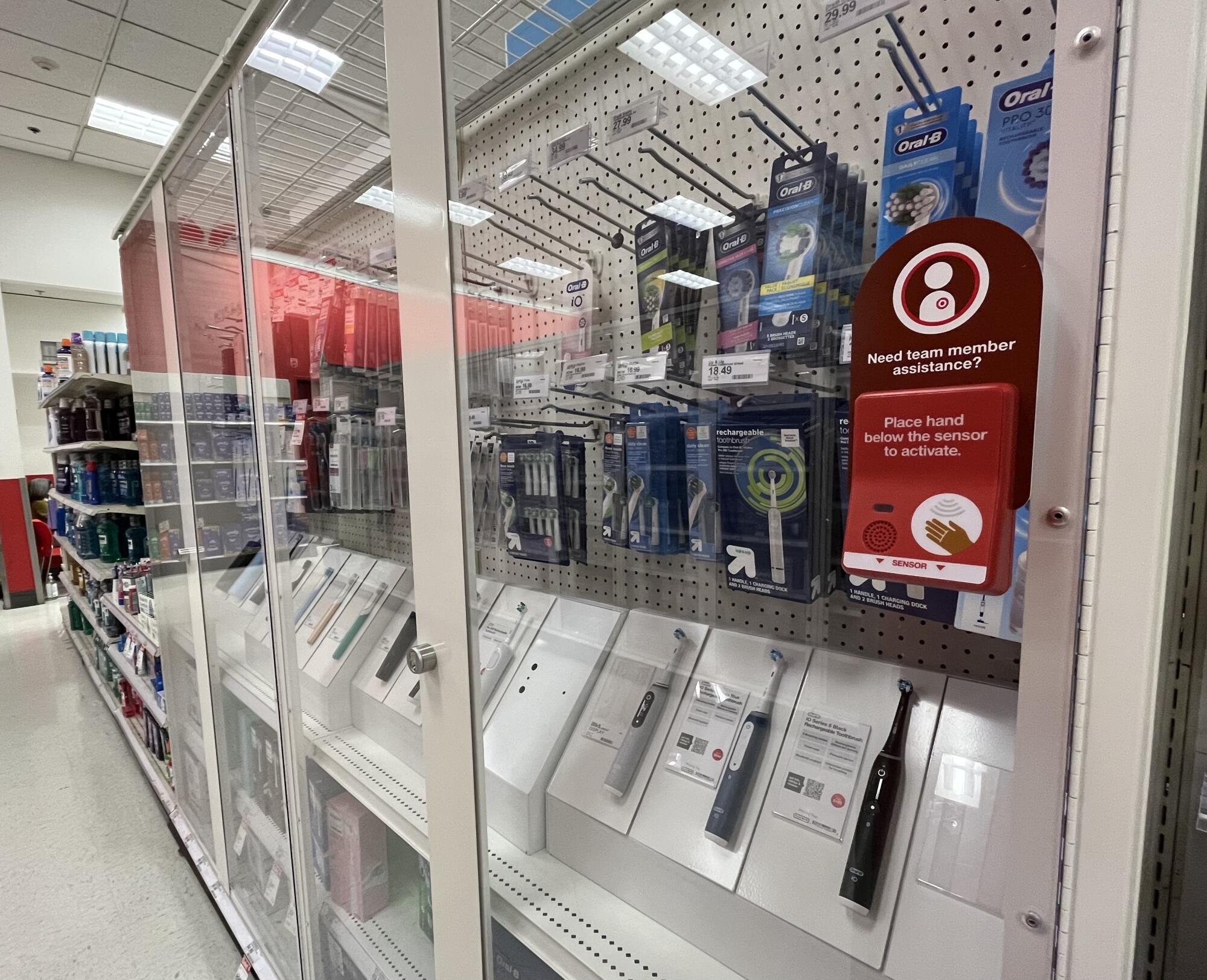
Retailers know that the additional supplies and labor needed to lock up more merchandise cut into their bottom line and frustrate customers, Johnston said, but some have decided it’s a necessary trade-off to keep shelves stocked with often-stolen items such as baby formula and medications.
“Right now, the best approach in many instances is putting it behind lock and key,” Johnston said. “These measures are last-ditch efforts.”
Locked cabinets safeguarding merchandise are now ubiquitous in retailers. Anti-theft measures like these erode customers’ spirits and our social fabric, even though it’s unclear whether shoplifting has become the national crisis some claim.
Joe Budano, the chief executive of Indyme, a San Diego-based company that makes buttons to beckon sales associates to specific aisles, estimated that frustration over waiting for locked merchandise leads to a 10% to 25% reduction in sales, calling the cages “the bane of retail.”
His company also has developed technology — the Freedom Case, they call it — that allows shoppers to open cases themselves using personal information such as their cellphone number or by scanning their face.
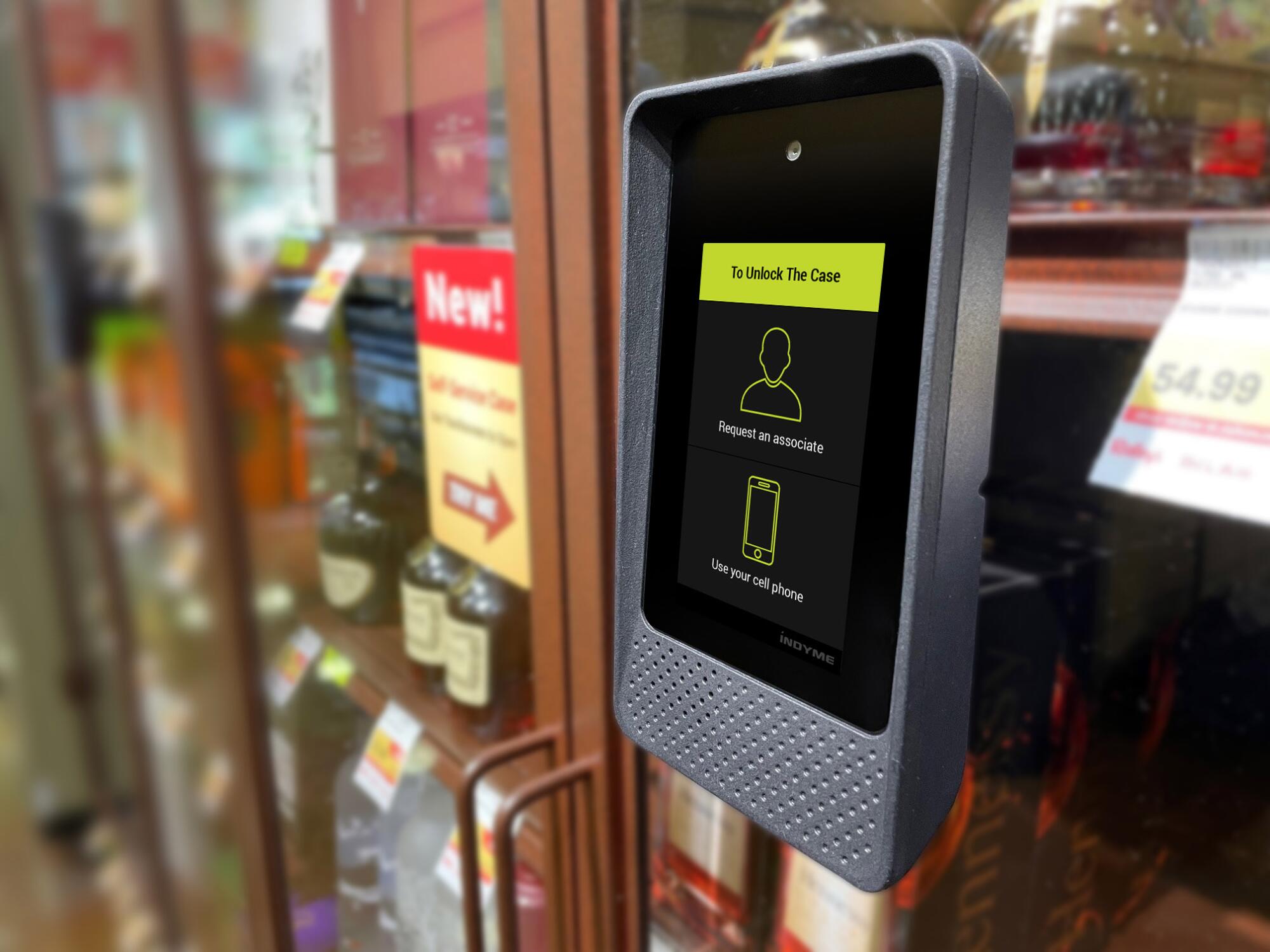
More than 40 retailers are testing the Freedom Case in stores, Budano said, including a national chain he declined to name.
To combat theft, Budano said, companies often scrutinize missing merchandise using individual SKUs, the most granular data possible.
“They know all the way down to which flavor of Oil of Olay is most stolen,” he said. “The pace at which things have gotten locked up tells you the magnitude of the problem.”
But that magnitude — which retail industry groups say has reached “unprecedented” and “epidemic” levels, despite data showing such characterizations are overblown — varies by city.
The Council on Criminal Justice, a nonpartisan research organization, tracked shoplifting trends in 24 cities from 2019 to the middle of 2023 and found that rates were down in more than two-thirds of the cities. New York City and L.A. were the two biggest exceptions, logging increases of 64% and 61%, respectively.
Even in light of the recent surge in L.A., the rate of reported shoplifting incidents in L.A. County in late 2022 was slightly lower than it had been 2014, according to a report from the Public Policy Institute of California, a nonpartisan think tank that analyzed state Department of Justice statistics. During that eight-year period, only three of the state’s 15 most populous counties — all in the San Francisco Bay Area — saw increased rates of shoplifting, a misdemeanor crime defined as stealing goods valued at less than $950.
The report’s author, Magnus Lofstrom, said that rates of reported shoplifting dropped in much of the state, including L.A. County, when stores emptied out during the 2020 shutdowns. But the region saw a steady rise in the summer of 2021, he said, and by late 2022, the most recent data at the time of his report, the rate was at least 10% above the pre-pandemic level.
In recent months, several companies, including the 99 Cents Only chain and Target, have cited theft or shrink as a reason that factored into their decisions to shutter locations.
Charis Kubrin, a professor of criminology at UC Irvine who studies retail theft, said that although some stores lock up lots of merchandise, others cage almost nothing.
“It’s kind of an uneven distribution,” she said. “A mixed bag.”
A Times analysis from 2022 found that stores in higher-income areas locked up fewer items even in places where property crime rates were higher, creating an additional burden for shoppers in certain neighborhoods. And inconsistencies in how locked merchandise is released to customers — sometimes workers hand you items to put in your cart, other times they escort merchandise to the register — raise the same questions of racial profiling that have long plagued retail establishments.
“The owners and employees have wide-scale discretion,” Kubrin noted.
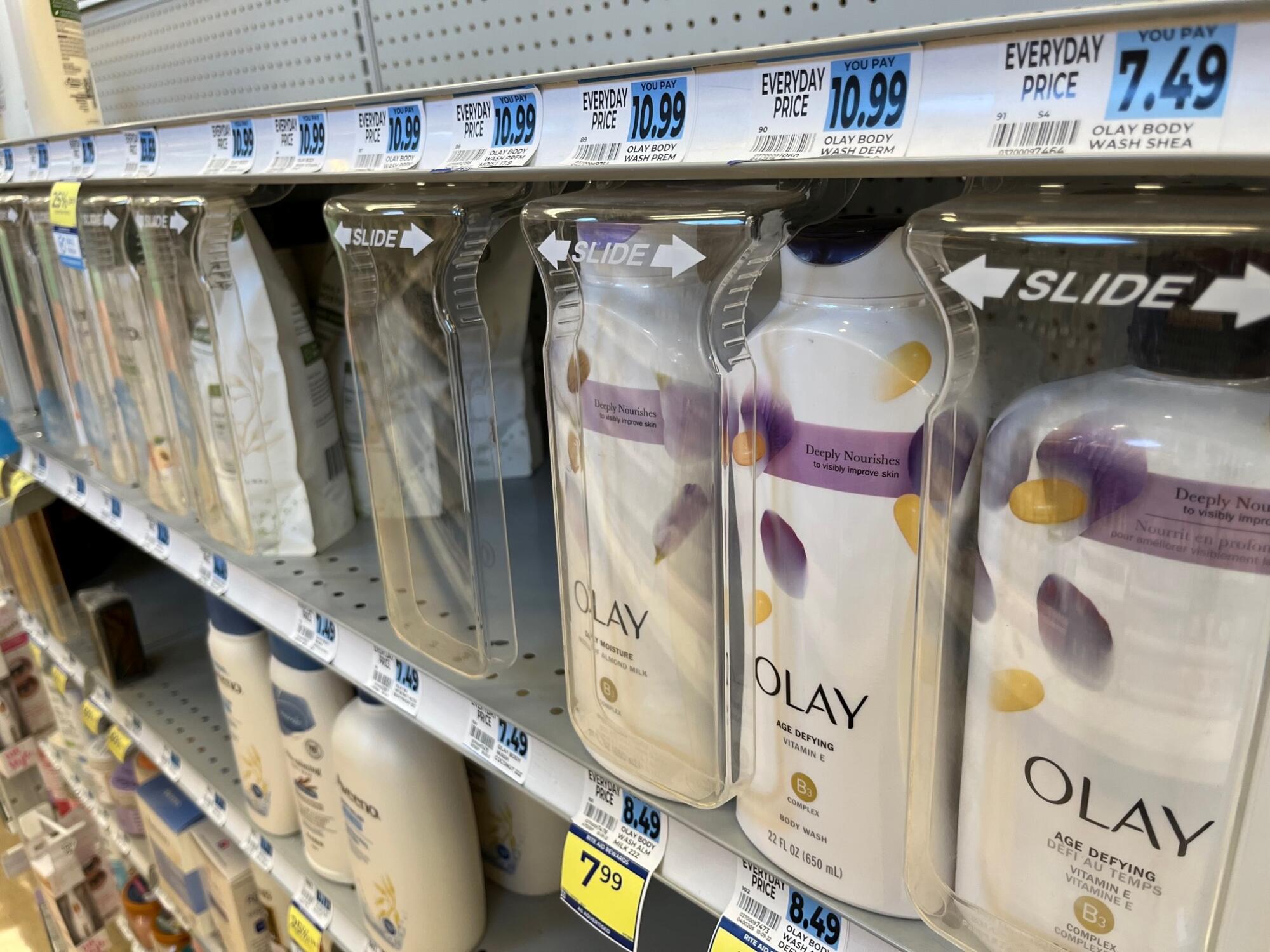
The scale of merchandise theft, Kubrin added, is sometimes overblown by a retail industry happy to pin its problems, which include market forces such as inflation and a shift to online shopping, on stolen merchandise.
Crime, she acknowledged, is part of the equation. As a consumer, Kubrin distilled her frustration with locked merchandise down to the same word many other shoppers used: “Annoying.”
A man posted on TikTok recently that CVS was treating a bag of Werther’s Original caramel candies like a controlled substance and on Reddit someone said the anti-theft measures should force an entire genre of retailer to rebrand themselves:
“Inconvenience store.”
In interviews with five employees at retail locations across the Southland, workers said rushing to unlock merchandise for often-peeved customers has made their slammed shifts more hectic.
“I apologize a lot and I get yelled at a lot,” said a supervisor at a Vons in Pasadena.
But several workers said they understood their employers’ decisions, noting that around late 2021 or early 2022, they’d noticed an uptick in people putting multiples of a single piece of merchandise into big bags and walking out — boosters, as they call shoplifters they suspect will resell the merchandise.
The criminal complaint filed by Bonta’s office this year included text messages suggesting that the defendants, who prosecutors say targeted beauty retailers Ulta and Sephora, used that method.
“I’m not stealing regular I’m going to start filling up my bag quick,” one defendant wrote. “I want to know stuff I can grab.”
Rogelio Madrigal, a shift supervisor at a CVS in San Pedro, started 16 years ago and has noticed changes through the years.
There was a time, he said, when the main thing they locked up was Sudafed. Eventually, items such as Plan B and razors got added and then, a couple years ago, he noticed more people swiping Tide Pods. Now, he mainly sees people walk out with boxes of diapers and cosmetics.
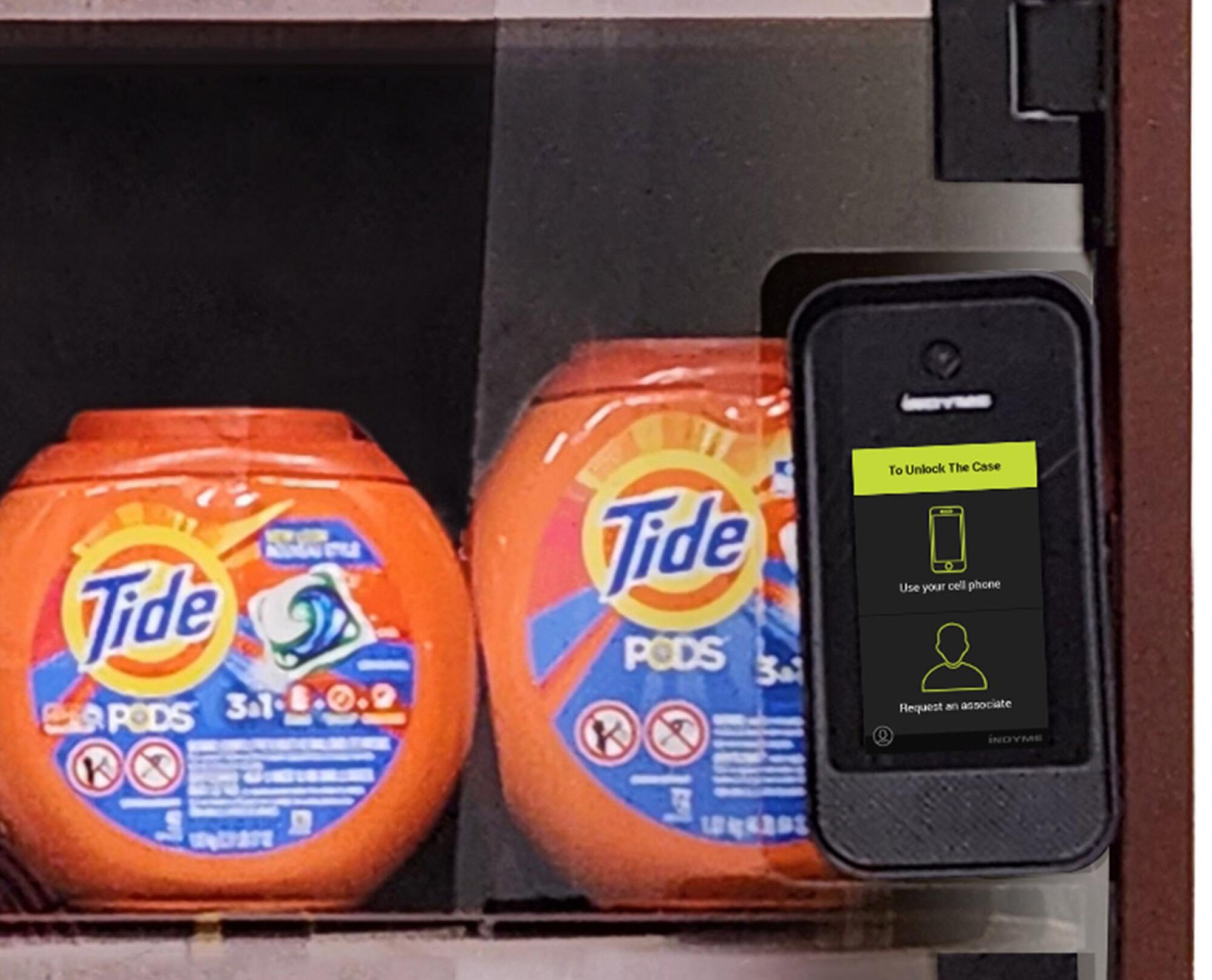
“It was happening before,” he said, “but not as bad as now.”
On a recent morning at a Rite Aid in East Hollywood, the lone cashier greeted customers who walked through a doorway lined with security alarm panels.
“Welcome in,” he said.
Many of the aisles were lined with anti-theft mechanisms, including red magnets at the end of metal prongs holding items like eyelash curlers and an individual plastic cage around a $22 box of lice treatment. Some sections, including all the toothpaste and most of the detergent, were locked behind long, clear cages.
A customer steadying himself with a cane peeked through a cage at a bottle of Tide and shrugged, settling instead on a small container of Persil, one of the few non-caged detergents, before walking to the register.
At a nearby Vons, the greeting cards and candy were out on shelves, but an assortment of school supplies, including a ruler for $1.47, was locked up.
In the medication aisle, a woman with a full cart sighed when she realized that one of the last items she needed — a small bottle of Claritin, an allergy medication — was locked up. She pressed the button and an automated refrain that, during busy hours, rings out like the store’s soundtrack played: “Thank you, someone will be with you shortly.”
Less than a minute later, when a worker with a key ring rounded the corner, her eyes widened in surprise.
“That was fast!” she told him.
“We try,” he said.
More to Read
Inside the business of entertainment
The Wide Shot brings you news, analysis and insights on everything from streaming wars to production — and what it all means for the future.
You may occasionally receive promotional content from the Los Angeles Times.
